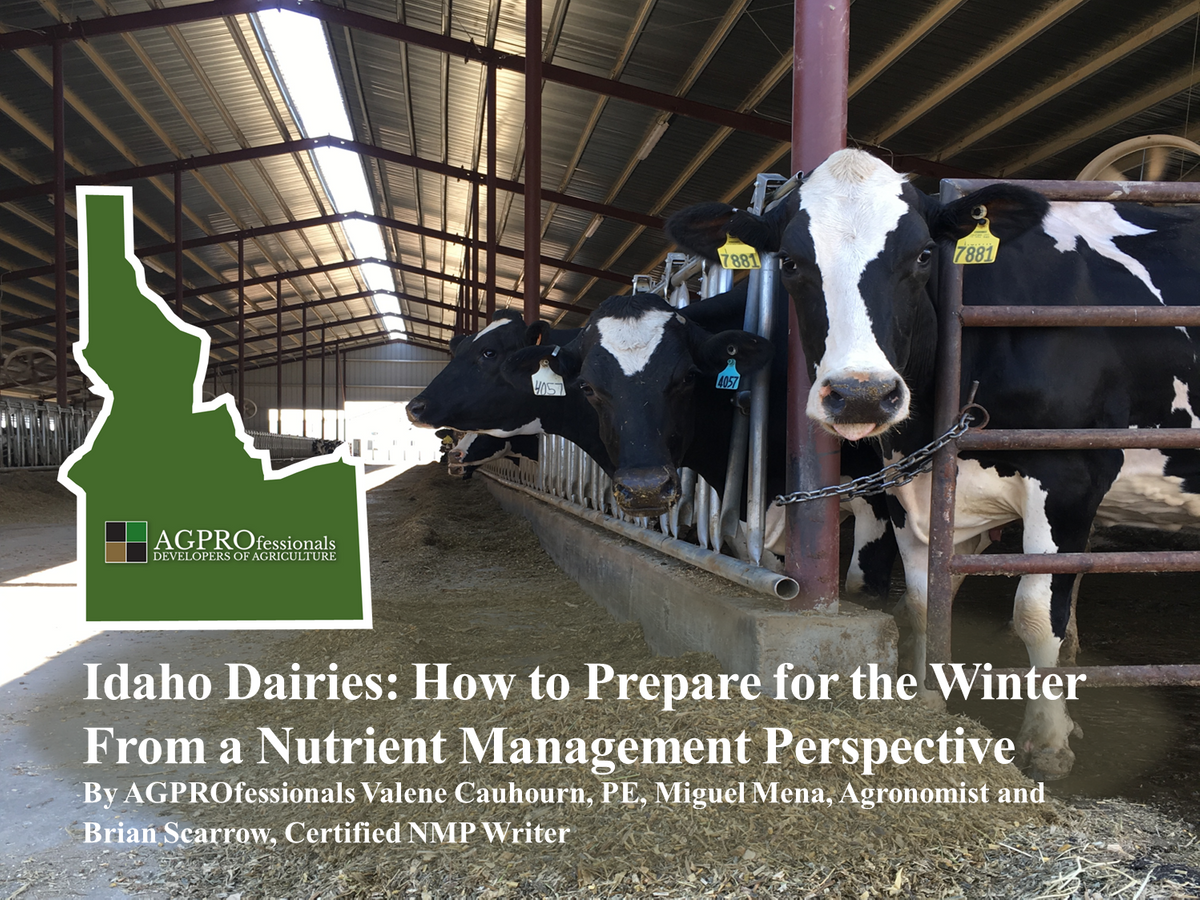As fall turns to winter, dairy farmers face a critical transition period. While attention often goes toward keeping cows comfortable, maintaining equipment, and managing feed supplies, nutrient management is just as important. How a dairy farm prepares its nutrient plan for winter has long-term implications for herd health, soil fertility, and water quality.
Winter conditions create unique challenges. Frozen soils, snow cover, and spring thaws all increase the risk of nutrient losses if manure and fertilizers aren’t managed carefully. With good planning, however, dairy producers can protect their investment in nutrients, meet regulatory requirements, and set their farms up for success when spring arrives.
1. Evaluate Manure Storage Capacity
Manure storage is a crucial factor to consider before winter. Dairy operations must ensure that lagoons have enough capacity to hold manure during the cold months when land application cannot take place.
- Measure current storage levels and ensure that there is sufficient storage for the winter months, including manure, parlor process water, and winter run-off.
- Inspect storage structures for leaks, cracks, animal burrows, vegetation, or signs of wear, especially liners and agitation points.
- Plan for emergencies by identifying backup storage options and/or neighboring farms willing to take excess manure if needed.
A full lagoon in January leaves little room for error, especially if winter storms or extended freezing conditions delay application windows in the spring months.
2. Time Fall Applications Carefully
Some dairies choose to apply a portion of manure in early fall before the ground freezes, leaving winter storage capacity more manageable. If manure or nutrients are applied in the fall, timing and placement are everything.
- Avoid applying manure or nutrients on frozen or snow-covered soils. Nutrients applied in these conditions are highly prone to runoff during thaws. Please note that the Idaho State Department of Agriculture (ISDA) prohibits the application of wastewater after November 15th.
- Incorporate manure when possible. Injection or light tillage helps keep nutrients in place and available for spring crop utilization.
- Follow setbacks and buffer requirements. Keeping applications away from waterways reduces runoff risk.
3. Leverage Double Cropping
Double cropping is a valuable tool for dairies looking to retain and capture nutrients through winter. When farms utilize fall manure applications, double cropping is especially effective at scavenging residual nutrients and keeping them out of waterways.
- Double-cropping grasses like rye or triticale after a corn crop offers several benefits: the crop can establish quickly, it helps hold soil in place, reduces erosion, and increases nutrient uptake. This method can be used to manage soil nutrients by drawing extra nutrients from the soil when the field has been previously over-applied.
- Legume mixes can add nitrogen-fixing benefits while still protecting water quality.
- Grazing potential may exist in fall or spring, providing an additional feed source or revenue stream.
4. Review Nutrient Management Plans (NMPs)
Winter preparation is a good time to review and update your farm’s Nutrient Management Plan. Accurate records meet compliance standards and also provide valuable insights into long-term soil fertility trends and planning.
- Check manure test results to ensure nutrient values reflect current conditions. Manure testing is to be completed every year on all manure streams that are land applied.
- Align field application records with crop removal rates and regulatory requirements.
- Evaluate land availability for application and plan accordingly. Soil sampling before application is recommended to determine if soils are nutrient deficient or if soil phosphorus content limits the application of manure. (ISDA does not allow applications to soils measuring greater than 300 ppm of phosphorus.)
5. Prepare for Spring Thaw Risks
Runoff during snowmelt is one of the highest-risk times for nutrient loss. Proactive work now helps protect nutrients from being lost just as fields begin to warm. Steps to prepare include:
- Maintaining grassed waterways and buffers to filter runoff.
- Stockpiling bedding or absorbents for areas prone to heavy manure accumulation (such as winter lots or feeding areas).
- Inspecting drainage systems and tile outlets to make sure they are functioning properly.
- Ensure that berms are in place to prevent runoff from leaving the facility or stockpiled manure areas. This prevents runoff from leaving the site and potentially entering any waterways.
6. Keep the Herd in Mind
Nutrient management doesn’t stop at the field’s edge; it begins in the barn. Efficient feeding and barn management directly reduce pressure on storage and nutrient handling systems.
- Balance rations carefully to avoid overfeeding nutrients like phosphorus, which increases manure nutrient load.
- Maintain clean lots and barns to reduce the buildup of manure in areas exposed to runoff.
- Plan winter bedding strategies that help keep manure manageable and storage consistent.
- Make sure that water trough or water line leaks are resolved quickly, as they can quickly fill up lagoons that might already be tight on space.
Final Thoughts
For dairy producers, preparing for winter from a nutrient management perspective is about more than compliance; it’s about protecting investments in feed, soil, and herd health. By ensuring manure storage capacity, applying nutrients responsibly, leveraging cover crops, and planning ahead for spring runoff, dairies can safeguard their resources and position themselves for a strong growing season ahead.

